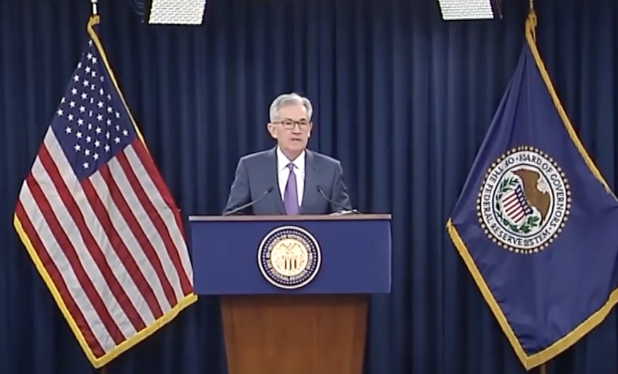News
Federal Reserve Hints At Cutting Interest Rates This Year

Source: YouTube
The Federal Reserve is gearing up for a significant shift in monetary policy. After two years of aggressively fighting inflation and maintaining interest rates at near-quarter-century highs, the Fed is expected to signal a reduction in borrowing costs as soon as September. This anticipated rate cut, the first since the pandemic, could offer a substantial boost to the economy. Historically, the Fed’s decision in cutting interest rates benefit Americans with mortgages, auto loans, and credit cards. While a single cut in the Fed’s key rate, currently at around 5.3%, might not drastically impact the economy, the expectation of multiple cuts has already influenced financial markets. Some borrowing costs have already gone down in anticipation of this move.
As a result, futures markets are betting on a 64% chance that the Fed will cut rates three times this year: in September, November, and December. Previously, Fed officials predicted just one instance of cutting interest rates in 2024 and a few more in subsequent years. However, the pace and extent of these cuts remain a hot topic.
Why the Market Believes the Fed will Cut Interest Rates More Than Once
Financial markets anticipate more interest rate cuts than the Fed currently projects due to several factors. First, there is a growing concern that the global economic slowdown could impact the U.S. economy more than expected. With other major economies showing signs of weakening, market participants believe that the Fed will need to act more aggressively to support U.S. growth. Cutting interest rates more than once can help address this issue.
Second, the bond market is signaling a need for lower rates. Inversions in the yield curve, where long-term interest rates fall below short-term rates, often predict economic downturns. This inversion suggests that investors expect slower growth and potentially even a recession, leading to increased expectations for bolder Fed intervention.
Third, inflation remains a key concern. While recent data shows a decline in inflation, markets are wary of potential flare-ups. They believe that additional interest rate cuts could help ensure that inflation stays in check and supports long-term economic stability.
Finally, market sentiment is influenced by global central bank policies. With other central banks, such as the European Central Bank and the Bank of Japan, maintaining or cutting their rates, there is pressure on the Fed to keep U.S. rates competitive. This ensures that the dollar remains strong and prevents capital flight to other economies with lower borrowing costs.
Cutting Interest Rates Depends on the Current US Economic Condition
The Fed’s decisions will hinge on economic performance in the coming months. If economic growth remains robust and hiring continues, the Fed might opt for a gradual rate reduction. However, if the labor market shows signs of slowing down, the Fed could accelerate its rate cuts to prevent economic deterioration. Recent data indicates that the labor market is cooling, as intended by the Fed. Job growth has averaged 177,000 per month over the past three months, down from a hot average of 275,000 a year ago. This cooling could signify either a shift to a more sustainable growth period or a potential slide into recession.
Fed Chair Jerome Powell and other officials emphasized balancing inflation control with maintaining a strong job market. Powell recently highlighted that the threat of a hiring slowdown is as significant as inflation pressures. This shift in focus has likely increased market expectations for a rate cut.
The economy grew at a healthy 2.8% annual rate in the April-June quarter, following a modest 1.4% growth in the first quarter. This solid performance supports the idea that the economy is on stable footing for now. However, concerns about future risks remain.
Inflation Trends and Fed Communications
Observers anticipate that Powell will provide more clarity on plans in cutting interest rates during his speech at the Fed’s annual monetary policy conference in Jackson Hole, Wyoming this August. This week, the Fed might tweak its post-meeting statement to hint at impending rate cuts. For instance, the statement could indicate that significant progress has been made towards the Fed’s 2% inflation goal.
In June, the Fed projected year-end inflation to average 2.8%. Recent data shows that inflation has already dropped to 2.5% in June. If this trend continues, it might justify more aggressive rate cuts than initially planned. Moving forward, Fed officials are expected to emphasize short-term inflation averages, such as the three-month and six-month annualized rates. The three-month average of the Fed’s preferred inflation gauge, excluding food and energy, fell to 2.3% in June, suggesting that inflation pressures are easing.
Cutting Interest Rates: A Big Decision Ahead
As the Fed prepares to potentially cut rates this fall, the economic landscape appears poised for a pivotal shift. The central bank's decisions will significantly impact borrowing costs, market expectations, and the broader economy, with considerable political implications as well. Investors and consumers alike should stay tuned for further developments from the Fed's upcoming communications and policy adjustments.
Do you expect the Federal Reserve to cut interest rates this year? More importantly, do you anticipate that the US will cut interest rates three times cuts instead of one? Let us know what you think!



